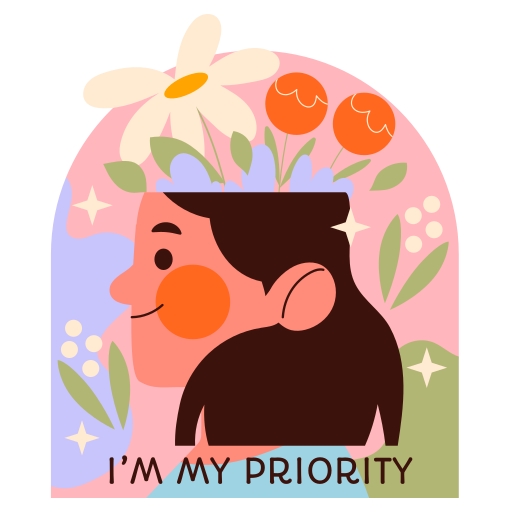Do you ever find yourself dealing with someone who seems all wound up like a spring? It can be tough, but there's a trick to turning that tension into tranquility. By staying cool and showing kindness to someone who's feeling anxious, you can turn a stressful situation into a peaceful one. Understanding what's making them anxious and responding with care instead of getting defensive can work wonders in making things better for both of you.
In this chat, we'll explore ways to handle tricky situations, set limits when needed, and help everyone feel better when anxiety is around. It's all about creating a safe space for talking and growing together. So, let's dive in and discover how to navigate those tough moments with grace and understanding!
Understanding Root Causes
Understanding the root causes of uptight behavior is essential in fostering empathy and developing effective strategies for supporting individuals who exhibit such behaviors. Stress plays a significant role in triggering uptightness, as individuals may feel overwhelmed by various pressures and uncertainties. The need to control situations and outcomes often stems from a fear of failure or a desire for perfection, leading to heightened levels of stress and anxiety. Inadequate stress management skills can exacerbate these feelings, making it challenging for individuals to relax and adapt to changing circumstances.
Exploring the root causes of uptightness involves investigating underlying issues such as past experiences, genetic predispositions, societal expectations, and mental health conditions. By uncovering these factors, individuals and their support network can better understand the origins of uptight behavior and tailor interventions accordingly. Addressing the need for control through effective stress management techniques, therapy, and coping strategies can help individuals navigate their emotions and responses more constructively, ultimately fostering a sense of empowerment and resilience in managing uptight tendencies.
Responding Without Taking Things Personally
When interacting with someone who is uptight, it is crucial to maintain your composure and focus on understanding their perspective. Remember that their behavior is often a reflection of their internal struggles, not a personal attack against you. By staying calm and composed, you can respond with empathy and assertiveness, fostering a more constructive and supportive dynamic.
Stay Calm and Composed
Maintaining a composed demeanor in interactions with uptight individuals is important for diffusing tension and fostering constructive communication.
How to Stay Calm and Composed:
- Regulate Emotions: Acknowledge your feelings but choose how to express them wisely.
- Respond Without Taking Things Personally: Focus on the situation rather than internalizing the behavior.
- Practice Self-Control: Take deep breaths, count to ten, or excuse yourself briefly if needed.
- Remain Composed: Show resilience and adaptability, setting a positive example for the uptight person.
Focus on Understanding
In steering interactions with uptight individuals, it is essential to approach the situation with a focus on discerning underlying motivations and stressors. Uptight behavior often stems from internal stress and anxiety, leading individuals to exhibit perfectionism and rigidity in their actions. By understanding that these behaviors are coping mechanisms, one can show empathy and support to help them develop healthier strategies. Setting clear boundaries and prioritizing self-care are essential when dealing with uptight people to maintain personal well-being. Effective communication, staying calm, using neutral responses, and setting boundaries can help navigate interactions with uptight individuals without taking their behavior personally. By focusing on understanding and offering support, one can foster a more positive and constructive relationship with uptight individuals.
Setting Boundaries With Uptight Individuals

To effectively navigate interactions with uptight individuals, establishing clear boundaries is paramount for safeguarding your emotional well-being and fostering healthy communication dynamics. When setting boundaries with uptight individuals, consider the following:
- Prioritize Physical and Mental Health: Recognize that setting boundaries is crucial for maintaining your well-being and preventing the stress of others from affecting you.
- Utilize Polite Communication: Communicate your boundaries firmly yet politely to make sure that your limits are respected while maintaining a respectful tone.
- Practice Self-Care: Take care of yourself by knowing when to walk away from tense interactions and prioritizing your mental health in challenging situations.
- Show Empathy: While setting boundaries, practice empathy by offering support and assisting uptight individuals in developing healthier coping mechanisms, thereby fostering a more positive and constructive dynamic.
Practicing Empathy
When dealing with an uptight individual, it is crucial to practice empathy by understanding their perspective and showing compassion. By listening without judgment and offering patience, you create a safe space for them to express their feelings. Acknowledging their emotions and validating their experiences can help foster a sense of trust and support in your interactions.
Understanding Their Perspective
Understanding the perspective of an uptight individual involves delving beneath surface behaviors to grasp the underlying emotions and experiences driving their need for control and certainty. To effectively empathize with them, consider the following:
- Practice active listening: Listen attentively to understand their fears and anxieties.
- Put yourself in their shoes: Empathize with their desire for control and certainty.
- Validate their feelings: Create a supportive environment by acknowledging their emotions without judgment.
- Recognize underlying causes: Understand that their uptight behavior may be a result of past experiences or ongoing stressors.
Showing Compassion and Patience
In order to foster a supportive environment for an uptight individual, demonstrating compassion and patience is key to building trust and rapport. When someone is feeling uptight, they need others to take a step back and try to understand their perspective. Managing your stress can help you respond with empathy and kindness. Showing compassion involves recognizing their struggles, whether it's work pressure or personal challenges, and offering a listening ear without judgment. By acknowledging their feelings and validating their experiences, you can help alleviate their sense of isolation and overwhelm. Encouraging open communication and providing support can create a safe space for them to express themselves freely and feel understood.
Listening Without Judgment
To truly support an uptight individual, it is important to engage in active listening without passing judgment, demonstrating empathy and understanding towards their concerns and emotions. Practicing deep breathing techniques can help you remain calm and collected during the conversation, allowing you to focus on the individual's needs. Letting go of preconceived notions and biases is vital to show genuine empathy towards their situation. Utilize reflective listening by paraphrasing their words to show that you understand their perspective. By avoiding interruptions and providing a safe space for them to express themselves, you can build trust and rapport with the uptight person. Remember, listening without judgment is key to helping them feel heard and supported.
Effective Communication Tips
When communicating with an uptight individual, employing neutral responses and establishing clear boundaries is key to fostering effective dialogue. It is vital to remain calm and empathetic, focusing on addressing one issue at a time when dealing with their behavior. Active listening plays an important role in understanding their perspective, while offering support can assist them in developing better coping strategies. By avoiding taking their behavior personally and staying composed, one can effectively establish limits in a calm manner. Creating an environment that encourages open dialogue and support can facilitate meaningful communication with an uptight person.
| Effective Communication Tips |
|---|
| Practice active listening |
| Stay empathetic |
| Set clear boundaries |
Managing Stress in Their Presence

Employing stress management techniques and maintaining healthy boundaries can help navigate the challenges of interacting with an uptight individual while prioritizing your own well-being. When managing stress in the presence of an uptight person, consider the following:
- Practice Deep Breaths: Taking deep breaths can help calm your mind and body, allowing you to respond more effectively in tense situations.
- Set Healthy Boundaries: Establish clear boundaries to protect your mental and emotional health. Offer support and empathy while ensuring that you are not compromising your well-being.
- Engage in Active Listening: Listen attentively to the uptight individual, acknowledge their feelings, and validate their experiences. This can foster a sense of connection while managing their stress levels.
- Prioritize Self-Care: Focus on self-care practices to recharge and rejuvenate yourself after interactions with uptight individuals. Remember to set limits and seek support when needed to safeguard your own mental well-being.
Frequently Asked Questions
What Are the Characteristics of an Uptight Person?
Characteristics of an uptight person include high stress levels, perfectionism, micromanaging tendencies, and a need for control. They struggle with flexibility, adaptability, and relaxation. Developing stress management, communication skills, and mindfulness practices can help.
What Causes a Person to Be Uptight?
Uptightness in individuals can be triggered by various factors such as stress triggers, childhood experiences, personality traits, environmental factors, and mental health issues. Understanding these root causes is important in addressing and supporting individuals exhibiting uptight behavior.
How Does an Uptight Person Act?
Uptight individuals often exhibit rigid coping mechanisms, communication styles lacking in flexibility, stress triggers that lead to heightened anxiety, difficulty in employing relaxation techniques, and challenges in emotional regulation. Understanding these aspects is critical for effective interaction.
How Do You Make Someone Less Uptight?
To make someone less uptight, utilize relaxation techniques, communication strategies, stress management, positive reinforcement, and mindfulness exercises. Promote a supportive environment for open dialogue, understanding their concerns, setting boundaries, and fostering trust to help ease tension and promote relaxation.

















